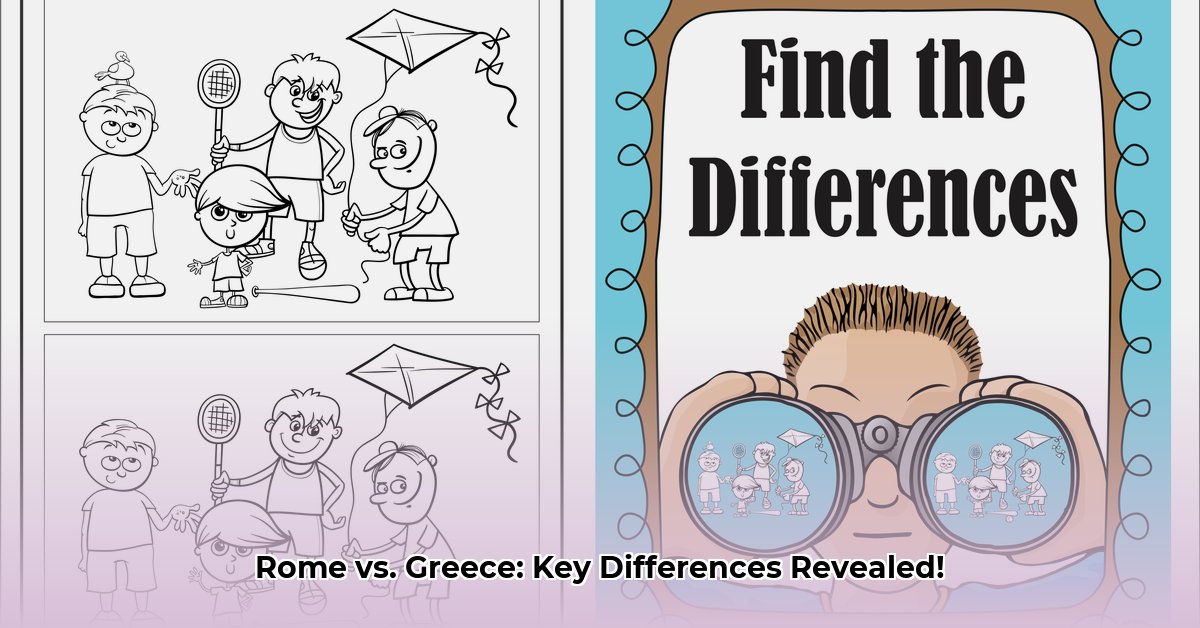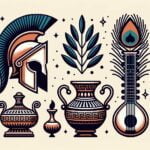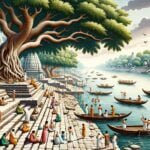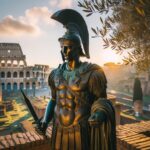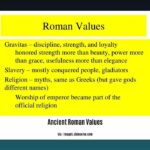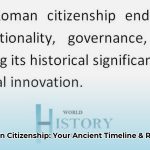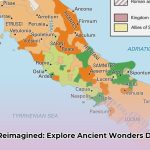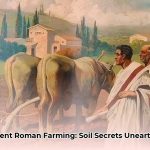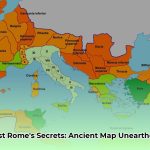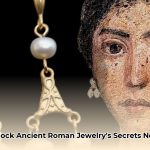Imagine two colossal powers of antiquity, Ancient Greece and Ancient Rome, each casting a long, brilliant shadow across the Mediterranean world. These ancient civilizations were not merely contemporaries but profound shapers of human history, bequeathing a wealth of groundbreaking ideas—from foundational concepts in governance and breathtaking art to profound philosophical traditions that continue to influence contemporary society. See this map of Ancient Greece and Rome for geographical context. Yet, despite their geographical proximity and shared classical heritage, their paths diverged significantly in their core characteristics and societal approaches. This article serves as your essential guide to understanding the distinct characteristics that defined each civilization: from their political structures and societal values to their unique cultural expressions, intricate social hierarchies, and even their respective mythologies and pantheons. Prepare to discover the surprising ways these two ancient powerhouses shaped the modern world, influencing everything from our legal frameworks to our artistic appreciation and the very foundations of Western thought.
Contrasting Governance and Political Systems
The political landscapes of ancient Greece and ancient Rome present a fascinating study in divergent methodologies, reflecting their distinct aspirations and challenges. Greece, a vibrant mosaic of fiercely independent city-states such as Athens, Sparta, Corinth, and Thebes, championed varied approaches to self-rule. Athens, for instance, famously pioneered the concept of democracy in the 5th century BCE, evolving from earlier aristocratic and tyrannical phases. Here, male citizens—typically free-born adult males—directly participated in the legislative process through assemblies held in the Agora. They debated laws, voted on policies, and even practiced “ostraca,” the temporary exile of individuals deemed too powerful, to safeguard their democratic ideals. Conversely, Sparta, renowned for its formidable military strength and austere way of life, operated under a unique oligarchy known as a “dyarchy,” where power was shared between two kings, five ephors, and a council of elders. This fragmentation across Greek city-states fostered remarkable intellectual and cultural innovation, yet also contributed to internal rivalries and vulnerabilities to external threats.
Rome, in stark contrast, embarked on a transformative political journey driven by expansion and the need for centralized control. Beginning as a monarchy, it expelled its last king in 509 BCE to establish the Roman Republic. This republic developed an intricate system of checks and balances designed to prevent the concentration of power, dividing authority among elected officials (like the two consuls, who served one-year terms), the influential Senate (composed of patricians, leading families), and popular assemblies that represented the people, including the plebeians (common citizens) who gradually gained more rights through institutions like the Tribunes of the Plebs. As Rome expanded its dominion across the Mediterranean through relentless military might and strategic alliances, the republic’s institutions struggled to govern such a vast territory. This eventually led to a series of civil wars and the ultimate transition into a vast empire under powerful emperors beginning with Augustus in 27 BCE. Under the emperors, authority became increasingly centralized, and while the Senate still existed, its power greatly diminished. The distinction is striking: envision Athenian citizens passionately debating the fate of their city in the Agora versus the definitive decrees issued from the Palatine Hill by an all-powerful Roman emperor. This fundamental difference profoundly impacted their respective trajectories, the rights of their citizens, and their lasting global influence.
| Feature | Ancient Greece (e.g., Athens) | Ancient Rome (Republic to Empire) |
|---|---|---|
| Primary System | City-states (Democracy, Oligarchy, Monarchy, etc.) | Republic (509-27 BCE), then Empire (27 BCE-476 CE) |
| Citizen Input | Direct participation (Athens) | Representative bodies; Emperor’s absolute decrees |
| Power Structure | Decentralized; independent city-states | Centralized, especially under Emperors |
| Key Institutions | Assembly, Council of 500, Ostracism | Senate, Consuls, Assemblies, Emperor, Civil Service |
Cultural and Intellectual Divergences
The cultural fabric of ancient Greece and ancient Rome reveals even deeper distinctions, reflecting their core values and intellectual pursuits. Greek culture ardently celebrated philosophy, artistic innovation, and the relentless pursuit of knowledge. Seminal thinkers like Socrates, Plato, and Aristotle laid the intellectual bedrock for much of Western thought. Socrates, through his questioning method, emphasized ethics and the examination of one’s beliefs. Plato, his student, delved into metaphysics, political theory (e.g., The Republic), and the theory of Forms. Aristotle, a polymath, explored a vast range of subjects from logic and ethics to biology and poetics, significantly influencing scientific method and Western academia. Their artistry frequently aimed for idealized human forms and perfect proportions, beautifully exemplified in iconic marble sculptures that once graced the Parthenon atop the Acropolis and masterpieces like the timeless Venus de Milo. The Greeks also pioneered epic poetry (Homer’s Iliad and Odyssey), drama (tragedies by Aeschylus, Sophocles, Euripides; comedies by Aristophanes), and historical writing (Herodotus, Thucydides), often exploring themes of fate, heroism, and human nature. Did you know that the Greek ideals of athletic competition profoundly influenced the modern Olympic Games, resurrected in their honor?
Roman culture, while undeniably influenced by Greek aesthetics and thought, placed a greater emphasis on practicality, particularly in law, engineering, and efficient governance. Roman art often gravitated towards realism, vividly capturing scenes from daily life, individual portraits (busts), and significant historical events, as powerfully demonstrated in the statue of Augustus of Prima Porta. Roman architecture showcased extraordinary engineering prowess and an innate sense of grandeur, often incorporating Greek elements but pushing boundaries with innovations like concrete, the arch, and the dome. Colossal structures like the Colosseum, the Pantheon (with its revolutionary dome), and vast aqueducts and road networks underscored Rome’s pragmatic approach to civilization building, designed for durability, utility, and the display of imperial power. Their literature, while drawing inspiration from Greek predecessors, often served to glorify Rome itself. Virgil’s epic poem, the Aeneid, for instance, tells the story of Aeneas, a Trojan refugee who founded the Roman race, thus providing a mythical origin for the empire. Roman law, codified in works like the Corpus Juris Civilis under Emperor Justinian, became the bedrock of many modern legal systems. This focus on utility, monumental scale, and legal order distinctly underscores Rome’s pragmatic contributions to civilization.
Social Structures and Participation
Both Greek and Roman societies were rigidly structured with clear social hierarchies, differentiating between free citizens, non-citizen free individuals (metics in Greece, peregrini in Rome), and enslaved individuals. However, Roman society demonstrated a comparatively more inclusive approach for certain groups over time than many early Greek societies. In Athens, citizenship was highly restricted, typically to free-born adult males, excluding women, slaves, and metics from political participation. Greek women were generally expected to remain within the domestic sphere, primarily managing their households, and their legal rights were severely limited.
In contrast, while their public roles were still largely circumscribed, Roman women, particularly during the Republic and Empire, possessed the legal right to own, inherit, and dispose of property. They engaged in business, could attend public spectacles, and were highly valued for virtues such as “piety, modesty, maintaining harmony, and devotion” within the family and public life. While they could not vote or hold public office, wealthy Roman women could exert significant influence through their male relatives. A critical point of historical contrast in the social hierarchy between ancient Rome vs Greece is the more extensive and systemic reliance on enslaved labor in Rome compared to the Greek city-states. Roman slavery was integral to its economy, utilized across all sectors from agriculture and mining to domestic service and intellectual pursuits. While slavery existed in Greece, its scale and societal integration, particularly as a driver of empire-wide economic production, were more pronounced in Rome. Roman society was also marked by deep class distinctions, notably between the patricians (hereditary aristocrats) and plebeians (common citizens), though plebeians gained increasing rights and influence over centuries through intense political struggle.
| Feature | Ancient Greece (e.g., Athens) | Ancient Rome (Republic/Empire) |
|---|---|---|
| Citizenship | Restricted (free-born adult males) | Initially based on birth, later expanded (e.g., Caracalla’s edict) |
| Social Mobility | Limited but possible for freed slaves (metics) | Limited, but opportunities for freedmen existed |
| Key Social Groups | Citizens, Metics, Slaves | Patricians, Plebeians, Equestrians, Freedmen, Slaves |
| Women’s Role | Heavily restricted to domestic sphere | Could own property, engage in business, influence family |
| Labor System | Slavery present, varying scale | Widespread and foundational slavery for economy |
Religion and Mythology: Gods and Empire
The religious practices of both the Greeks and the Romans were characterized by polytheism, the worship of multiple deities within a complex pantheon. Greek mythology served as a cornerstone of their culture, deeply shaping their art, literature, and perception of the cosmos, populated by powerful gods and goddesses such as Zeus (king of the gods), Athena (goddess of wisdom and warfare), Apollo (god of music and prophecy), and a host of lesser deities and mythical heroes. Greek religious practices involved elaborate rituals, sacrifices, and festivals like the Panathenaic Games, often centered around temples dedicated to specific gods and believed to directly influence human affairs. Oracles, particularly the Oracle of Delphi, played a significant role in political and personal decision-making.
Roman religion was significantly influenced by Greek spiritual traditions; they adopted many Greek deities but consistently assigned them Roman names while often incorporating their own unique rituals and cults. For instance, Zeus became the mighty Jupiter, Athena transformed into Minerva, and Ares became Mars. So, while the nomenclature shifted, the core divine influences persisted, highlighting a fascinating cultural transference and adaptation. However, Roman state religion also incorporated ancestor worship and the veneration of household gods (Lares and Penates), emphasizing family piety. Crucially, the Roman state cult involved the deification of successful emperors after their death, serving a vital purpose in reinforcing social order and legitimizing imperial authority across their vast, diverse dominion. Public festivals and spectacles within Rome were often tied to religious observations, further intertwining civic and spiritual life. How did the eventual adoption of Christianity as the official religion of the Roman Empire in the 4th century CE fundamentally shift this deeply entrenched polytheistic landscape? This transition marked a profound cultural and political transformation for the entire Western civilization, leading to the decline of the traditional pagan pantheon and the rise of a new monotheistic belief system that would shape Europe for centuries.
Enduring Legacies: A Synthesis of Influence
The distinct paths taken by ancient Greece and ancient Rome have left an indelible and multifaceted mark on modern Western civilization, the echoes of which resonate globally. Greece, with its profound emphasis on philosophical inquiry, democratic principles, and idealized artistic expression, provided the intellectual and aesthetic blueprints for much of subsequent European thought. Consider the enduring impact of Greek logic and ethics on our modern legal reasoning, scientific inquiry, and philosophical systems. Their systematic approach to mathematics (Euclid), medicine (Hippocrates), and astronomy laid foundational elements for these fields. The very concept of citizen participation in governance, however limited at the time, emerged from the Greek city-states, laying the groundwork for future democratic aspirations.
In contrast, Rome, focusing on pragmatic applications of power, sophisticated legal codes, and monumental engineering feats, bequeathed a legacy of structured governance, unified empires, and practical innovation that shaped the physical and administrative landscape of Europe for millennia. Roman law, with its principles of equity, justice, and the rights of individuals before the state, became the backbone of legal systems worldwide. Their construction of resilient roads, awe-inspiring aqueducts, and the vast network of trade routes transformed the ancient world and still inspire awe today, demonstrating an unparalleled capacity for large-scale infrastructure and logistical organization. Latin, the language of Rome, became the root of all Romance languages (Italian, French, Spanish, Portuguese, Romanian) and significantly influenced English vocabulary.
These two historical giants, though differing in their core approaches and societal values, both contributed indispensable elements to the global heritage. From the roots of democratic thought and profound philosophical discourse originating in Greek city-states, to the comprehensive legal systems, administrative genius, and vast infrastructural achievements of the Roman empire, their influence remains palpable. Understanding these key civilization contrasts allows us to appreciate the rich tapestry of human development and recognize how ancient foundational ideas continue to shape our contemporary world in profound and unexpected ways, truly defining what it means to be part of Western civilization.
- Rome’s Top Architectural Marvels: Exploring Ancient Roman Buildings - August 15, 2025
- The road to Roman citizenship: Timeline, rights and privileges in ancient times - August 15, 2025
- Unlock Ancient Rome on the Map [Now]: Digital Wonders & Cultural Legacy - August 15, 2025
